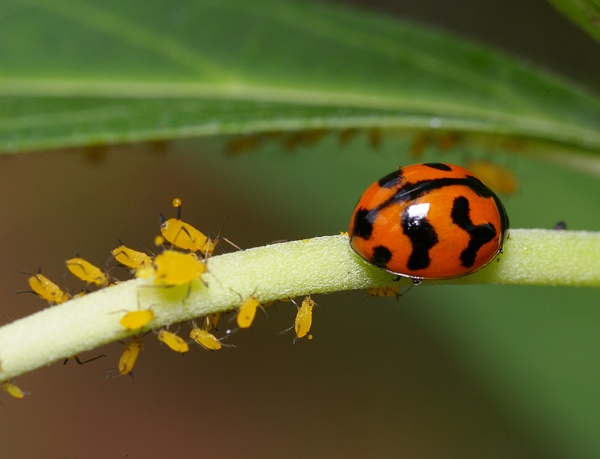

Female reproduction was also prey quality dependent showing maximum reproductive performance in terms of fecundity and percentage viability, with a highest reproductive period and lowest non-reproductive period on A. gossypii and minimum (37.75, 2.18 and 60.69%, respectively) after feeding on A. transversalis was maximum (68.33, 7.82 and 88.21%, respectively) when larval instars consumed A. Immature survival, growth index and adult emergence of C. The total prey consumption by larva, adult male and female in their lifetime was maximum (665.30 ± 5.75, 4831.10 ± 123.30 ± 94.51, respectively) on A.

gossypii (13.01 ± 0.18 days) and longest on A. The complete development was shortest on A. Significant effect of prey quality was observed on pre-imaginal developmental periods, wet weights and adult longevity. All of them were found to be essential prey, however the relative prey suitability varied. Aphis craccivora, Aphis gossypii, Aphis nerii, Myzus persicae, Lipaphis erysimi and Uroleucon compositae were provided as prey to the feeding stages of Coccinella transversalis (Fabricius). However, further field based studies are needed to confirm this hypothesis.read more read less sexmaculata is the best predator for the management of both prey species, particularly A. The potential role of these predators in biocontrol of A. Differences in coefficients of attack rates, however, did not vary significantly in most of the treatments. Differences in handling times were found to be significant within and between the predatory species on both prey species indicating that predators respond differentially to prey species. dissecta, in terms of consumption of the aphids, Aphis craccivora and Myzus persicae, with suitable values of coefficient of attack rates and handling times on these prey species. sexmaculata responded maximally, followed by C. The linear reciprocal transformation of Holling's disc equation was used to further evaluate the parametric values. All three predators exhibited a decelerating curve Type II response determined by a logistic regression model. The eggs hatch into carnivorous larvae, then pupate into oval pupae before hatching out as adults.Abstract: The functional response parameters and patterns of three coccinellid predators, Cheilomenes sexmaculata, Propylea dissecta, and Coccinella transversalis (Coleoptera: Coccinellidae) were evaluated to find out how these predators respond at two different prey species across various prey densities levels. Transverse Ladybirds lay eggs on food plants. Plants that attract aphids and other insect preyĪdults and larvae eat soft-bodied insects, such as aphids. They are active during the day and adults and larvae can be found living on the same food plants. There is a dark strip down the centre where the wings meet, and prominent V-shaped markings on each side. The Transverse ladybirds is bright orange-red in colour with black markings on their back. Transverse Ladybird on milkweed plant with milkweed aphids. Photograph copyright: ozwildlife - all rights reserved. The Transverse Ladybird has V-shaped markings Transverse Ladybird ( Coccinella transversalis)


 0 kommentar(er)
0 kommentar(er)
